Start learning 50% faster. Sign in now
There are two persons sit between the ones who like Yellow and Pink, who sits at one of the extreme ends. From these conditions we have four possible cases. H sits second to the right of D, who sits opposite to the one who like Yellow. The one who likes Orange sits immediate left of D. 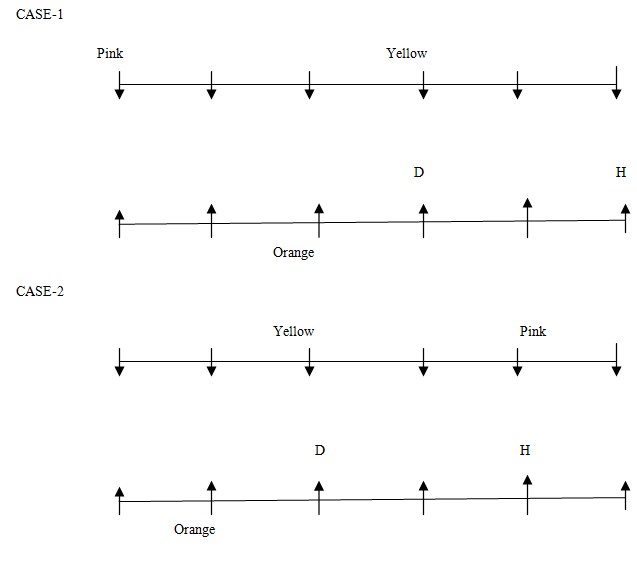
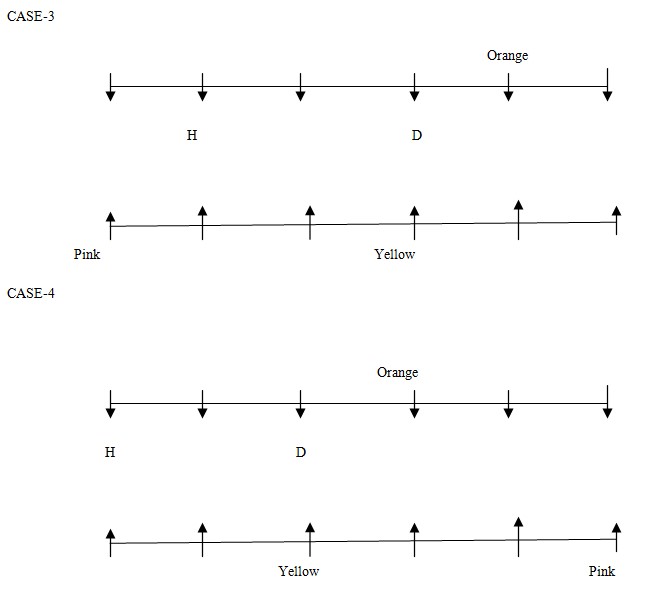 The one who likes Black sits at one of the extreme ends. The one who likes Cream sits second to the left of the one who likes Black. The ones who like Black and Red sit diagonally opposite to each other. By these conditions case 1 and case 4 are cancelled. The ones who like Cream and Green sit opposite to each other. So new arrangement will be -
The one who likes Black sits at one of the extreme ends. The one who likes Cream sits second to the left of the one who likes Black. The ones who like Black and Red sit diagonally opposite to each other. By these conditions case 1 and case 4 are cancelled. The ones who like Cream and Green sit opposite to each other. So new arrangement will be - 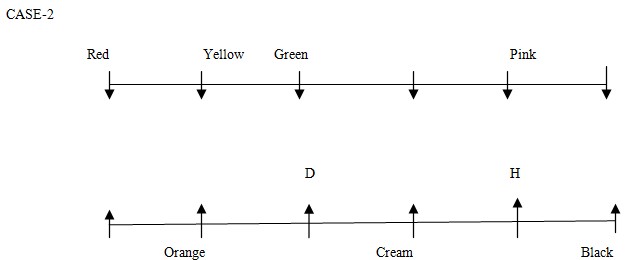
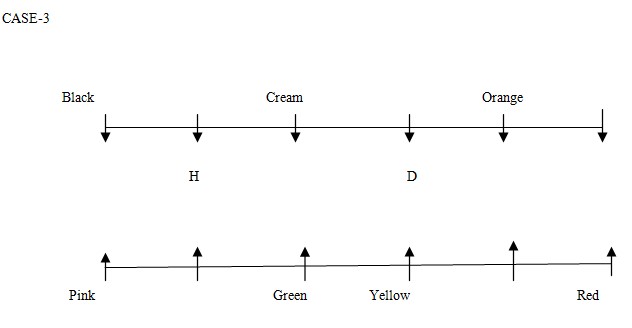 The ones who like White and Blue sit opposite to each other. E sits third to the left of the one who likes White. G sits second to the left of vacant seat of Row-2. In Row2, all are facing south direction. By these conditions case- 3 is cancelled. J sits second to the right of F and does not like Yellow. I sits opposite to the one who is an immediate neighbour of C. Only one person sits between A and I, who is not an immediate neighbour of D. So final arrangement will be -
The ones who like White and Blue sit opposite to each other. E sits third to the left of the one who likes White. G sits second to the left of vacant seat of Row-2. In Row2, all are facing south direction. By these conditions case- 3 is cancelled. J sits second to the right of F and does not like Yellow. I sits opposite to the one who is an immediate neighbour of C. Only one person sits between A and I, who is not an immediate neighbour of D. So final arrangement will be - 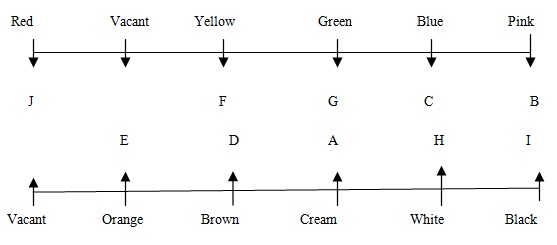
Select the next number in the category.
33, 35, 38, 43, 50,?
Select the option that represents the correct order of the given words as they would appear in an English dictionary?
1.Flint
2.Flec
<...Vasant says, “I have as many sisters as brother”. Vaishali say, “Each of us sisters has only half as many sisters as brothers”. Assuming that Va...
Select the correct water image of the given pattern, assuming that water is parallel to XY.
Select the following four options, the one that CANNOT be concluded from the given statements.
Statement 1: All coats are skirts
Stat...
Five friends Alex, Ben, Chris, David, and Emma are sitting around a circular table facing the center. Alex sits to the immediate right of Ben. Alex is n...
Read the given statements and conclusions carefully. Assuming that the information given in the statements is true, even if it appears to be at variance...
Statement:
A. All germanium is lithium.
B. Some deuteron are plumbum.
C. Some germanium is chlorine.
Conclusion:
(I) ...
Statement: There is a large increase in migration of villagers to urban areas as repeated crop failure has put them into financial problems.
C...
Which of the following letter-clusters will replace the question mark (?) in the given series?
XI, EE, LB, SZ, ?